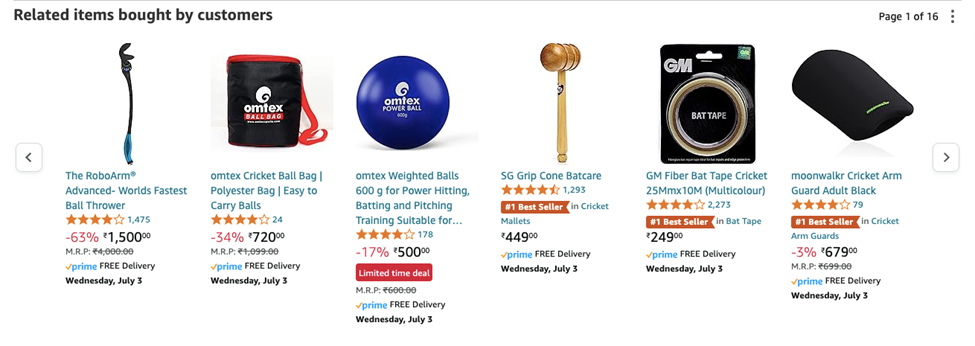Hyper-personalization in ecommerce


Picture a department store – a massive, maze-like space with everything under the sun. Customers dread entering it and put off shopping trips for weeks because if they need just an item or two, they need help to get in, find it, and get out fast.
Now imagine a store that magically transforms every time a customer enters. The shelves only display what you specifically need. Customers would choose that store repeatedly, never opting for the department store again, because such hyper-personalization is a win-win for both the buyer and the seller.
It’s time to invest in the hyper-personalization of the customer experience.
Hyper-personalization in online retail delivers tailored shopping experiences, just like those magical shelves that display different products to each person entering the store. It transforms the online shopping experience, which is extremely important as 86% of consumers are willing to pay more for a great customer experience. After a positive experience, these customers spend up to 140% more.
What is hyper-personalization in ecommerce?
While traditional personalization uses primary customer data like purchase history and browsing behavior, hyper-personalization goes beyond.
Hyper-personalization in ecommerce crafts a unique shopping experience for each customer. It uses a wide range of data sources and references customer demographics, past interactions, real-time behavior, and other factors to tailor the customer journey from start to end.
For example, with traditional personalization, a website might recommend shoes from a similar brand or price range as previous purchases. However, with hyper-personalization, the buyer might be linked with an upcoming race they’re training for or even the weather where they live.
Hyper-personalization is a more customized approach in which brands personalize every touchpoint for their customers by utilizing the power of AI/ML. Such an approach makes the customer feel the brand takes note of their choices and remembers them, leading to increased sales in the long run.
By employing hyper-personalization, retailers can move from the one-size-fits-all approach to a remarkable shopping experience where customers feel seen and unique and are recommended precisely the product they want.
Hyper-personalization in the real world
Hyper-personalization is utilized by several popular brands. Amazon, for example, leverages its vast datasets to understand its customers, send personalized product recommendations, predict their buying behavior, and offer a seamless purchase experience.
For example, we’re writing this from India. We just won the T20 World Cup, which was held in the USA and the West Indies. Check out our related items page on Amazon:

Sephora too does something similar. It uses its customers’ purchase history and preference sets. This is for makeup looks and skin concerns. It then sends them point rewards and promos that target their unique needs. They even have a login-only “Beauty Advisor” section.

The benefits of hyper-personalization
Here are some of the key advantages of utilizing hyper-personalization strategies:
Increased customer satisfaction and loyalty
Imagine a customer who frequently cooks very healthy meals. In a hyper-personalized environment, she would be recommended new organic products based on past purchases. Such methods of winning customers make them feel valued, fostering loyalty toward the brand.
Reduced cart abandonment rates
When a customer has added items to their cart but hesitates to checkout, hyper-personalization can help. It can offer suggestions for complementary or supplementary items or even personalized discounts to motivate them to proceed with their purchase.
Improved conversion rates and sales
Hyper-personalization is a way to better understand the customer, which means presenting the customer with products that resonate. It also offers targeted promotions, upselling products based on user preference and behavior. This all adds up to further conversions and higher sales.
Hyper-personalization: beyond product recommendations
Hyper-personalization extends far beyond just product recommendations. Retailers can create a sense of excitement for each customer, making them feel unique and valued. Here’s how retailers can use hyper-personalization to craft a truly unique customer experience:
Personalized content and communication
Imagine you own a sporting goods store. You may be able to recover data from your customers’ fitness trackers, enabling you to send emails about their exercise targets.
Curated product collections and gift recommendations
An online furniture store can look into their first-time buyers’ browsing history and offer a curated collection based on their behavior.
Predictive search and product suggestions
A travel website can use real-time browsing data to suggest flights and hotels based on visitors’ past preferences or search terms. Customers share required dates and times, based on which the website can make highly specific recommendations.
Tailored shipping and delivery options
An electronics retailer can offer faster shipping options or extended return windows based on customers’ usual requirements, the number of products ordered, and delivery location.
Challenges of implementing hyper-personalization
While hyper-personalization offers a plethora of benefits, here are some hurdles you may need to consider:
Data privacy concerns and customer consent
Hyper-personalization is only possible through data; the more data there is, the better the personalization. Brands rely heavily on data, making data collection, maintenance, and management essential. This also means that brands must comply with GDPR and other data privacy regulations. They must also ask for and receive customer consent before collecting the necessary data.
Data infrastructure and analytics capabilities
An organization needs a robust data infrastructure to acquire in-depth data. This includes investing in data storage solutions that can store vast information. The business needs the tools to extract meaningful insights and enable hyper-personalization.
Over-personalization and the creepy factor
There’s a fine line between hyper-personalized and creepy! Letting customers know you know everything about them, including overly personal information, can backfire. Customers could even block the brand on all channels rather than continue to engage.
Balancing personalization across channels.
As important as it is to provide a hyper-personalized experience, businesses have to implement it across channels. From mobile apps to email marketing and the online store, your ecommerce business must deliver the same seamless experience at all touchpoints.
Getting started with hyper-personalization
Providing your customers with hyper-personalized recommendations is a daunting task. However, you can create a thriving customer experience with the right approach and unlock your true business potential. Here’s how to get started:
1. Identify key customer data points
Collect primary customer data, such as your customers’ purchase history, browsing behavior, and website interactions. This would establish the foundation from which you can look deeper to derive advanced data.
To go beyond basic analytics, examine users’ social media engagement and customer service interactions. Figuring out their pain points opens up many opportunities to create remarkable customer experiences.
2. Invest in marketing automation and personalization
It’s worth investing in a centralized customer data platform, as these platforms collect analytics from multiple sources and present it in a unified form in a single location. This way, you gain a comprehensive view of each customer journey. The software also offers product recommendations across channels, providing targeted advertising.
3. Build a culture of customer-centricity
Break down silos and bring all the departments together, from marketing to customer service. You can collect as much data as possible by leveraging customer data and interactions. Train your employees to understand how collecting customer data from various sources works and why unifying it is essential.
You can also look at customer feedback surveys, reviews, and comments on social media platforms to understand your customers better.
Hyper-personalization is here to stay and revolutionize the retail landscape. By harnessing the power of data, retailers can craft their customer journey unique to each customer, leading to satisfaction and soaring sales. There are obstacles along the way, but the rewards are worth it.
Hyper-personalization is an ongoing journey. To implement it, look for marketing automation platforms like Dotdigital. To configure and leverage the platform to the fullest, partner with Dotdigital integration service providers and official partners. The platform and hands-on experience of partners together will provide the tools and expertise you need to collect data, analyze it, and build hyper-personalized customer experiences.


